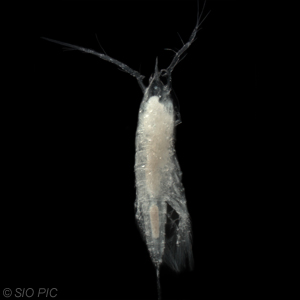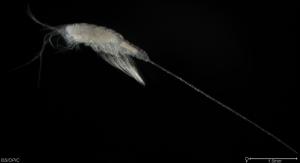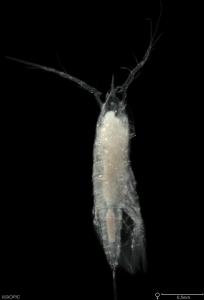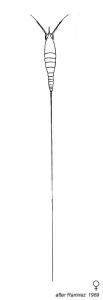Aegisthus mucronatus
In the both sexes the caudal setae are about 4-6 times the length of the cephalothorax with a bifid end. The 1st antennae are 6-segmented in females and 7-segmented in males. The males lack the long rostrum that is prominent in females.
Elongate, bifid caudal setae.
http://www.marinespecies.org/copepoda/aphia.php?p=taxdetails&id=115509
http://copepodes.obs-banyuls.fr/en/fichesp.php?sp=1823
Davis, C.C. (1949) The pelagic Copepoda of the northeastern Pacific Ocean. University of Washington Publications in Biology 14: 1-118.
Johnson, M.W. (1937) Notes on the final metamorphosis of the male of Aegisthus mucronatus Giesbrecht, and its bearing on the status of some uncertain species. Trans. Amer. Micr. Soc. 56: 505-509.




